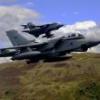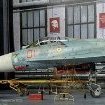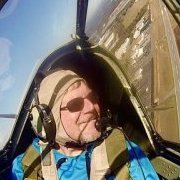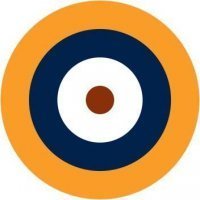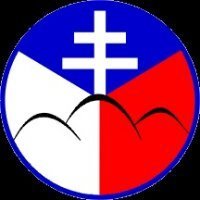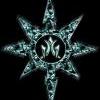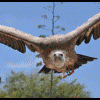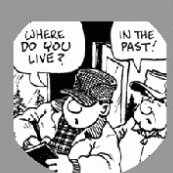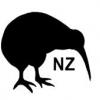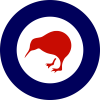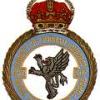Leaderboard
Popular Content
Showing content with the highest reputation on 24/04/20 in all areas
-
Here is the last of Jiro Horikoshi's designs. Only a few prototype A7M1's and one production A7M2 were built, due to the 1944 Nagoya earthquake and some persistent bombing by B-29's. None saw service. Reppu is the Japanese name, Hurricane in English, but the code name was just Sam. What with the J2M Raiden being a Thunderbolt, seems like the Zero at least could have been called a Thunderstorm! Typhoon? This is a very nice kit by Fine Molds. I did have some issues with the forward fuselage and cowl as they come in 4 parts with minimal areas to glue in addition to the main fuselage, and the alignment of the cowl is very dependant on how straight the engine is mounted. I'll get it perfect next time if I ever find tha A7M2 kit. THe fit of the upper wings was also a little loose as you move back from the leading edge. A little Epoxysculpt and a wet finger fixed it right up. I painted all the markings and the wing no step lines, and went without the no step text because all I could see of the black text against the dark green was the presence of decal film. I did put decals on the fuel tank caps, the prop, and the gear doors. Tamiya IJN green on top, Alclad Duralumin under, Mitsubishi interior green inside with details in Nakajima interior green. Gunze propeller color. The kit decal was used on the instrument panel, subdued nicely with Mr. Mark Softer, Eduard seat belts. With the Prototype Zero: The Zero, Jack, and Reppu: And with the P-47N and F4U-4 added. The Reppu would have been one nasty customer with the engine from the F4U-4.23 points
-
I built this Manchester MkI using various sources - the old-tool Airfix Lancaster, Planet Models as well as Paragon Designs. Decals came form the spares box. Regards, Rob17 points
-
1/48 HobbyBoss Mirage III Armee De L air, Dijon-Longivc, 1970. Vallejo acrylics and wash, Testors Gloss coat, aftermarket Neo resin cockpit and MB Mk 4 Seat and Eduard RBFT. A pair of shaky hands and weak eyes!!!!16 points
-
It's been a long time since I tried my hand at building a model of a sailing vessel but I could resist no longer and succumbed to the siren call of the Revell yacht America. I enjoyed this experience so much I'm planning on an other ship at some time in the future. I'd like to think it would be either the Revell 1/96 Cutty Sark or the 1/72 pirate ship but I think more realistically it will be something smaller because of time and space considerations.15 points
-
I've been working on this on and off for the last few months and have finished it off this week. I've used the classic Revell 1/48th B-17F kit and coupled it with Koster's vacformed beautiful early Fortress conversion set. This comprises a new rear fuselage with the distinctive 'shark fin', a new early nose and cockpit transparency as well as other various vacformed clear parts, along with some additional air intakes for the early oil cooler set up - all in all a very comprehensive conversion set. You have to undertake other mods to the Revell kit such as shortening the nose (the later Forts had a longer nose due to the heavier rear fuselage needing to be rebalanced), add additional seats to the flightdeck as well as reshaping the later paddle-bladed props to the earlier 'needle' type. The cowl flaps have to go too, as these weren't introduced until the D-model. They say a picture is worth a thousand words so here's a good summary of the work carried out: DSC_0063 by Thomas Probert, on Flickr I started with the Revell F-model kit rather than the Monogram G-model as the nose is far easier to modify - I just needed to blend in the larger cheek windows and then open them up in the shape of the smaller windows seen on the earlier models. Here you can see I have removed the necessary section to shorten the nose, as well as removing the rear fuselage and the Koster rear part is being offered up for size: IMG_E1388 by Thomas Probert, on Flickr I decided to do a later scheme used by the RAF on their Fortress Is which was slate / extra dark sea grey uppers with PRU blue undersides. I used my favourite Xtracolor enamels with generic Xtradecal codes and insignia to cobble together a 90 Squadron machine which was operated out of Polebrook in the Autumn of 1941. DSC_0091 by Thomas Probert, on Flickr DSC_0058 by Thomas Probert, on Flickr DSC_0064 by Thomas Probert, on Flickr DSC_0066 by Thomas Probert, on Flickr DSC_0068 by Thomas Probert, on Flickr DSC_0070 by Thomas Probert, on Flickr DSC_0073 by Thomas Probert, on Flickr DSC_0081 by Thomas Probert, on Flickr DSC_0082 by Thomas Probert, on Flickr DSC_0088 by Thomas Probert, on Flickr The fit of the Koster parts was exceptional - once they were removed from the backing sheet and sanded correctly it was like working with an injection-molded kit. In fact, the Koster parts fitted better than the Revell kit! The only tricky area was the nose transparency - this was a little too large to fit the Revell nose, but some careful trimming and careful blending with Milliput solved the problem. I'm now trying to get hold of the 1/48th Privateer conversion, but now Koster kits are OOP I'll have my work cut out - and they're currently going for silly prices on eBay! Regards to all, Tom15 points
-
Greetings from Russia, friends. I hope everyone is alive and well, at this difficult time for everyone. This model was built as a gift to the Air Force commander of Laos, who flew on this wonderful Soviet aircraft.14 points
-
Good day to all, Let me warn you first. This is one awfully ugly airplane that I am about to unveil on you. My friends picked this kit for me to do after my previous project. Here are the highlights I found of the kit............ 1. Very good fit of parts 2. Excellent detail throughout 3. Main colors used..... A. Polly Scale Light Ghost Gray FS36375 B. Tamiya Sky Grey XF-19 C. Model Master Dark Gull Gray ( cockpit ) D. Mission Models White E. Exhaust section : AK Interactive Extreme Burnt Metal, Steel, & Metallic Purple 4. Vallejo washes : Black, Lt Gray, Dark Brown, & Maroon 5. Added pilot from Hasegawa Pilot / Ground Crew set ( #X72-7 ) 6. Weathering done with paint and washes. 7. Replaced both nose pitot`s with metal tubes. All kidding aside, while not a type I would normally build, I found this particular kit extremely delightful to put together. I decided to depict the “Guppy” a bit weathered towards the end of the evaluation phase. Oddly, I could not find any red and blue / green wing lights from pictures so I simply omitted them ( for now ). I believed this kit languished on my shelf for about 25 years. I had completely forgot that I had it. I used the kit supplied decals to complete the project. I recommend this kit to all skill levels. Thank you in advance!!!!! Mike14 points
-
So the longest project finally finished. Quality of model itself as usually Hobby Boss or Trumpeter. I'm sure I've made some mistake and missed few things, but by the end it is only piece of plastic, isn't it?13 points
-
Hi all, this is my first post here and my first model aircraft since I was a teenager about 25 years ago! I'm sure there's lots of versions of this particular aircraft but I had a special reason for starting with this one as I was lucky enough to have a special birthday present last year and a flight in this very aircraft. I've built it as it would have been on D-Day, going two seater was too complicated for me at the moment. I might do it one day. It's the Eduard MkIXc Late Weekend edition. It's possible I should have used a MkIXe kit but I'm not going to worry too much about that at this stage. I'm quite pleased with it as a first build, there's some things I would try to do differently and I've got a lot to learn to get to some of the standards I'm seeing on this site but I'm happy with what I have achieved which is fine with me. I used Humbrol paints brushed on and tried some chipping using a stipple brush which I found in hobbycraft before it closed. I also had a go at weathering using a pencil - I can't rush out and buy oil paints at the moment. It's a bit heavier than I would have liked, especially on the stripes as they were supposed to be newly painted on!13 points
-
13 points
-
A recent completion is Sava-M Models' 1/72nd scale Gulfstream 500 "J-Star" which is used by the USAF as a surveillance platform. Quite a nice kit, built straight from the box. Xtracolor enamels used throughout. Regards, Rob12 points
-
12 points
-
Hello all Just finished this one off. What a great kit the Special Hobby Viggen is. Easy assembly, great fit of parts, clear instructions, lovely decals. It would put some of the larger mainstream manufacturers to shame. I've not done a Special Hobby kit for a while and they've come on leaps and bounds. Paints from Vallejo, Tamiya and Mr Hobby...but in hindsight the light green is a bit on the bright side. Although looking at photos of real Viggens it seems to range from light browny olive to Kermit green and everything in between! Anyway here she is.... comments much appreciated 🙂 If you do fancy doing a Viggen.... be prepared for lots of this! 🤪12 points
-
Hi Guys, due to the lockdown in France, I had to look at the bottom of my stash to find something exotic to build. I had bought the Roden kit of the Rolls-Royce armored car many years ago, but I was always frightened by the number of parts and low quality of the molding of some pieces. I usually build 1/48 scale aicraft, so this was quite a big change for me. I found a build by Andy Moore on this forum of the Meng rendition, which I tried to follow regarding the colors. Since I did not have access to AK real colors because of lockdown, I used custom mixes with Tamiya and Gunze acrylics. I used Mig Ammo premixed washes for the weathering. The small base is done with a sheet of foam board, covered with sand colored tile grout. The rocks and stones are two different grades of cat litter. Just for fun I added a milestone which is most probably incorrect for the place and period, but since this was meant as a relaxing build, I thought I could be forgiven. I hope you will like it, best regards to all, Christian.12 points
-
Slightly older completion but finally got around to some photography. Zvezda's 1/72 Su-33 out of the box... almost. I cut up the inboard leading edge slats and the horizontal stabilisers to pose them more realistically. I also opened up some holes not mentioned in the instructions and used the spare/optional pylons for the inboard wing stations. These are pretty unrealistic as they are rarely used due to take-off weight considerations, but I'll be damned if it doesn't look imposing with 12 missles hanging off it! This is my largest and most complex aircraft project to date, the decision to have it folded was as much shelf space pragmatism as presentation 🤣 It's a fantastic kit and makes me want to build more Zvezda Flankers, but no idea where I'd put them! All brush painted with AKAN acrylics. These require some beating into submission for brush painting, the lightest blue especially took over half a dozen coats in some places. But I wouldn't have it any other way as their colour fidelity is so perfect, and no alternatives were convincing enough for me.12 points
-
This is the 1960's vintage kit, complete with raised decal locators. I removed those and added a basic interior just so it wasn't completely empty in there. It went together easily, although I changed the order of assembly of all those wings to ensure decent alignment and sanity on my part. The decals were unusable, so I cobble together some from my spares. The kit is of the 'Black Mariah', and calls for the plane to be all black. From what I've been able to find out, only the cowl, metal engine panels and tail fin were black, the rest being conventionally painted. Since I wasn't doing a 'Black Mariah', I just painted the cowl and tail black. It's not my best rigging effort as having that wing in the middle made everything more complicated to get right. However, for a 60 year old kit, it doesn't look too bad.11 points
-
Hi all, one of the best kits I ever built is the Tamiya F-14 Tomcat. Built the D-version with some changes for a F-14B. This nice VF-103 F-14B with BuNo 163224 I took at Ramstein AB in 1996 while a NATO Recce-Meet. Add the Eduard PE`s, Brassin wheels and Master pitot.11 points
-
11 points
-
Well, finally finished this, in the No.92 Squadron of the RAF Wildenrath scheme, but with added weapons that shouldn't be there according to AirFix. Had a lot of fun building this. Its got a few faults, but I'm happy enough. Excuse the dust, I did try to clean it a little before the photos. Thanks for looking, and comments and constructive criticism always welcome, can't learn anything and advance in skills without that Paul11 points
-
Interior of the second (new kit) in place: Fuselage halves glued together: There is a bit of short molding on the right half of the nose close to the inst. pan., that will have to be filled later:11 points
-
Thank you guys, it is good to be back in such company. Just need to add something before we continue, the conundrum of COLOURS, what were the interior colours of a Heyford? What exactly is the colour/shade of NIVO, a conundrum for many modellers judging by the many different shades of ' green ' adorning all the Heyfords I have seen on display. The interior photos show a lighter colour used on the fabric and inside the forward cabin. The cockpit and bomb aimers position appear to be a darker shade. So after much thinking I decided to paint the cockpit and front compartment the same shade as the exterior of the aircraft. And knowing what I know now I wish I had painted the fabric and wireless cabin interior white .................. I am now building the Heyford's successor, the Harrow, and the fabric interior colour was white. Hey ho. And what colour did I eventually decide to replicate NIVO with? Well after trialling a number of different colours I opted for Humbrol Matt 224 Dark Slate Grey. The problem with exact colour matches if that were possible is that they are too dark when scaled down to 1/72 scale. The colour I needed to use had to still be 'scale' in shade when a coat of varnish had been applied over it. Here we have the right hand side of the forward fuselage. Nearest we have the wireless operator's seat and wireless equipment, forward porthole has been blanked over, then we have the folded seat for the second pilot and the gangway running into the forward bomb aimers/gunners position. In there we have the stowed drift sight, bomb aimer's stool and bombing control panel. When the two halves are joined we have this. The double control wheels column is pivoted and actually moves back and forwards. This is how small it all is. Yep, looking quite busy in there ...... This view shows the other corresponding parts of the fuselage, a continuous roof from front to rear and a lower rear fuselage section. I decided that I would try and make the ventral dustbin turret retract and rotate, mmmm . So I have cut out the turret opening and have also cut out the crew access hatch opening. Dustbin turret with gunner in place, scratchbuilt camera and pilot waiting patiently. Lower dustbin turret in position. Upper gunner's floor and gunnery steps, spare ammunition drums, parachutes stowage, maintenance ladders which were carried for when the aircraft were operating away from home base, lower access hatch and electrical panel.11 points
-
Hi folk's,Clogged posted a superb over the top scene which got me hunting out a dio I did about four or five years ago which was found a bit worse for wear in a box of old armour builds,out came the glue and paint and a repair done,the original photo's are long gone on PB.Thanks for looking in.10 points
-
My latest finished kit is Eduards Mig-21Bis Around The World kit. There's a great choice of schemes in the kit, I've always liked the Croatian scheme with the cheques despite the fact it's another 'grey' jet.10 points
-
Well, it's finally off the workbench...well dining room table actually! A thoroughly enjoyable build that you can see HERE for some tips and pointers if you're looking to build one. This particular aircraft served with 100 Sqn in 1950 on detachment from Waddington to RAF Tengah in Singapore along side Lincolns of the RAAF where they flew bombing missions as part of the anti-communist operations during the Malayan Emergency. It was flown by Squadron Leader Danny O'Brien and was inspired by the profile drawing on the inside front cover of the Lincoln Warpaint publication. The picture on the left above is the actual aircraft, the one on the right is a sister aircraft operating along side it. The kit is the excellent Lincoln resin conversion that was released last year by Blackbird Models. The quality is excellent. A couple of omissions are the correct rear turret shape and later larger H2S dome, but Glenn is looking to get these produced. Big thanks to the following people for helping out on decals: Perdu (Bill) who did the superb 'The Burra Hornet' text & flag for the nose art Tony OT who sent me a spare 100Sqn logo for the nose and lots of photo's for Lincoln inspiration Ed Russell who sent me lots of info about the Lincoln stencilling, although in the end I chickened out of making some! John Aero for clarifying the rear end modifications made to the Lincoln from the Lancaster & Hacker for posting the profile drawings As always, I feel the finished article is a collaborative effort, learned lots along the way Learstang (Jason), going to sit back now and wait expectedly to see some of your Avro heavies appearing here soon It was painted using Tamiya MS Grey & Rubber black. Decals were a mix of Blackbird roundels, Model Decal generic lettering, bespoke nose art & bits from the spares box. Enough waffling, here's the pictures... Thanks for looking Neil10 points
-
I remember buying this kit from a local newsagent shop about 1985 and it had been in my loft stash ever since. It is an original multi-coloured plastic issue with 1980 moulded inside one of the wing halves. I started building it about two years ago and spent much, maybe too much effort on scratchbuilding an almost complete fuselage interior. I am fortunate to have a Profile Publications Number 182 on the Heyford from the 1960s which contains a cutaway and several internal photos of the fuselage plus many inspirational photos and explanations of all the different versions. Having put so much time, research and effort into the fuselage I became restless to do something else so it all went back into its box. Then along came a rekindled passion from thirty years ago, motorbikes, and that sort of put a stop to my modelling. Then along came this world wide virus, and I found myself furloughed from work with plenty of time to spend indoors, and so I thought why not carry on with the Heyford. I was a bit worried as the last biplane I built was way back in 1976, that was the then new Airfix Sopwith Pup. But I have built a number of the small Matchbox biplanes and so I know how well engineered they are. I took this photo of the remaining parts and decals after I had completed the model. It shows the multi-coloured plastic parts typical of the Matchbox kits. A photograph that just inspires me to want to build a Heyford. Taken from the Profile Publication. Inspirational colour profiles from the Profile Publication. Useful cut-away drawing. Some useful interior photographs from the Profile. The Matchbox kit designer thoughtfully broke down the fuselage into the forward metal monocoque structure and the rear fabric covered metal tube structure. Here we have the left hand side of the forward fuselage. from left to right we have the wireless operator's position with the trailing aerial winding wheel, then camera and parachute pack. Next we have the pilot's cockpit with the huge trim wheel, throttle quadrant and instrument panel. And then we have the nose gunner/bomb aimer's position with spare ammunition drums and a gunnery step. Just need to break off here as I am being called to dinner. Be back soon.10 points
-
My 3rd work finished in 2020 is this little diorama, a corner of late 80s airport in China. Kit: Daco Skyline 1/144 737-300 Accessories: Extratech 1/144 737-300 photo-etching part Extratech 1/144 airport luggage traitor photo-etching part Preiser 1/144 airport crew Preiser 1/144 bicycles Authentic Airliners 1/144 737 3D window decal Authentic Airliners 1/144 737 vortex generator Mixture of several CAAC decals Thanks for watching. Please stay safe and build models! Yufei Mao10 points
-
This is the PM kit of the Fokker D.XXI FR-97 of 4/LLv 24 (4.lentue/Len-tolaivue 24) flown by Lt J. Sarvanto and operating from Immolation, Winter 1939-1940. It has had a temporary winter finish applied to the upper surfaces, ( You can blame the aircraft fitter for the shocking paintwork ! ) On 6 January 1940, Jorma Sarvanto, a Finnish lieutenant, destroyed six Soviet DB-3bombers in four minutes on one flight. Sarvanto was the top scoring pilot in the Winter War, with 17 kills. A big thank you to @PeterB for the decals they worked a treat. Hope you like it Cheers Pat10 points
-
Afternoon you lot. How is it Friday? I do trust you’re all well. some research and some dry fit pondering going on.🤔 Wheel wells, wheels and flappage. And office ware. I found some good reference pics that I have collated. I had done a few web searches for builds of this kit previously but I couldn’t find many initially. Last night I found a few good ones at “large scale planes” I’m going to delve and pick the bones tonight. Some looked rather good ☠️💀 I did some fitting as not to become a dull boy. ✊ I’m not 100% convinced that the little leg there will fit in that thar slot but judging by the amount of people I’ve seen thus far not making that adjustment and it looking just fine I’m going to pretend that I didn’t notice said error. I suggest you do the same.🤣🤫 Onward. The office floor is a little short. I’ll extend that and add some control pedals. That front we’ll looks a bit flat.🤔 The supplied fire wall looks to be in the wrong place too. Not even sure it’s a fire wall but I think I’ll add one. Looks like there are slots to house it. A bit of surface scratch work to go on in here but I’m going to keep the main structure as it seems sound. I popped the wings on. Actually they seem really good. 🤗 and a test of the front wheel and nose cone. Looking the part. 🤗🤗🤗 The front well is super shallow so as a token gesture I’ll give it depth if not width. As you saw before not a whole lot of room to play with. 🙃 but I do love a challenge. 😉 Also a special one for @hendie ⚖️🧱 78g of lead in there. ❤️ should be enough. Maybe. 🤔🤣 ok I’ll leave you with this one because it’s pretty. Thanks for popping in. And hope you have all had a splendid week. I think I’ll creep upstairs for a spot of Venom action. 🙌 Johnny9 points
-
Here is this week's build...this one took four days total, mostly afternoons and a little evening time. Tamiya 1/48 F4U-1A in RNZAF markings from Eagle Strike, Guadalcanal May 1945. I went a tad heavier than usual on the weathering and tried a few new techniques since the pics I found of this and other RNZAF aircraft around the same time showed them fairly dirty and hard-worked. Fun build.9 points
-
Five weeks into lockdown and I've managed to get something finished. I have an insane idea of trying to complete a model week every week until normal life resumes. This is the Airfix 1/72nd Mitsubishi A6M2 Zero. It's a neat, uncomplicated model, simple to build and with no nasty surprises. It's also the first time have ever built a Japanese aircraft as up to now they have never appealed to me. However, while reading an article on captured aircraft I came across the Akutan Zero, and my interest was piqued. You can find out its history here: https://en.wikipedia.org/wiki/Akutan_Zero TMB19 by Martin Schofield, on Flickr Essentially, it was recovered by the Americans, repaired and used for evaluation and familiarisation, painted in the standard USN Pacific Theatre aircraft camouflage, and this is what caught my eye. TMB21 by Martin Schofield, on Flickr TMB17 by Martin Schofield, on Flickr It was built out of the box with the addition of a brass tube pitot tube and EZ Line rigging line for the aerial wire. A big shout out goes to Eduard paint masks for making the greenhouse cockpit a much easier task. It was airbrushed with Tamiya acrylics and varnished with Alclad lacquers. The decals -all six of them (!)- came courtesy of the spares box. TMB20 by Martin Schofield, on Flickr TMB18 by Martin Schofield, on Flickr9 points
-
Last evening I got as far a cobbling the nose together - I can't say it was "assembled", because of the way the parts vaguely attach to each other. I also installed the tubular framework. A test fit of the canopy shows a little fettling is required to the frame to make it a comfy sliding fit. Some attention to the short-run seams was required, particularly underneath, but so far no filler has been deployed. That nose, from below. I am at a loss to explain why a single piece of resin has been created for the exhaust manifold. Why, oh why, couldn’t it be injection moulded as part of the nose itself? Now we have a shonky fitting part, superglued randomly among four IM parts, none of which have any location ledges or pegs. Doncha just lurve short run kits? The rear nose bulkhead may or may not be in the right place. Dry fitting the nose assembly seems to show it fits the fuselage, but if the bulkhead is supposed to meet the front of the body, well, that’s never going to happen. My only hope may be to add packing to give a secure fixing point, and hope the nose doesn’t just drop off at a later date! A cursory coat of aluminium paint went on most of the rest of the parts, to be retouched as required later. Time to investigate that belly tank, I think.9 points
-
Thanks guys - appreciated! Hopefully in the next few days bottles and glasses shall start to be produced (if I don't get side tracked) Well, my bathroom couldn't have been very good - 'cos that's the kitchen! Thanks though. You're right, there's nothing from any other kit - at least not anything that hasn't been modified and repurposed. The only things "stock" were the wheels - then I had to buy a lathe to turn them down as they looked like pizza cutters. I do have a pair of couplers that I bought to use, but I may end up printing my own as the one's I bought were for G-Scale and look kind of toy-like. and on to this evenings brief update - Paneling 101. I can't remember if I've mentioned this before but I'm altering contrast etc on these photo's to make them a bit clearer, but that has the undesirable effect of making the wood grain look very coarse. In the flesh, the grain is not nearly as bad as it looks here. (Honest!) Anyways. After I had finished up on the outer paint work and started on the interior, I realized that I had completely forgotten about the inlays on the paneling. Had I thought of this previously I would simply have had Steve at Railtec do them at the same time as the others. However, knowing that Steve was very busy, and given current circumstances and uncertainties around international post and all that, I found a place closer to home that I knew would get through the post reasonably easy. In the 1:1, several of the mahogany panels have a birds eye maple inlay that I needed to reproduce. At that scale you're never going to see the birds eyes so to make things nice and simple I chose a color that I thought was close to the maple, and just had the designs printed in a solid color block. It was all a bit of a chance as I had never applied decals to wood before and had no idea how a decal would react to wood-grain. You always hear that 'oh the surface must be smooth and gloss coated' and all that. So I gave the panels a coat of gloss, but wood grain is still wood grain. Taking a leap of faith, I applied the decals to the panels and micro sol'd and set'd them following up with a gloss coat to seal them in, and later, a semi gloss coat for that satin look finish Everything is looking good so far... Aaanddd the first panel gets glued in place, starting at the corridor I'm very pleased with the decals - the carrier film has disappeared nicely into the wood Then more panels get slapped in place. Add in an electrical cabinet and a heater box and it's starting to look as if it all belongs together. Please ignore the skewyness of the paneling at the carline level - I'll even that off later and it gets covered by some cornicing anyway. I didn't realize those two windows on the right were so bad though - not until I knelt down to take this photo. The line directly above the windows also gets covered by the blind covers, but I'm still kicking myself for not noticing that earlier. My bench is at waist height so I'm always working from above and this isn't the type of build where you can simply pick it up and turn it around to inspect as you go. Lesson learned - I need to pay more attention and look from different angles in future. Overall shot showing the corridor and dining area Window cills added. These close up shots are gruesome aren't they? The white line on top of the heater box is diluted PVA again. It will dry nice and clear and you'll never know it was there. You can see here that I offset the panel joins. I know they look as rough as a badgers wotsit but these seams don't need to be neat as they get covered by would you believe... cover strips Like these ones getting added here. Believe it or not but this is my second go round with these. I had previously cut them all full height and glued them in position before I remembered that there's heater boxes all along the wall at floor level and the cover strips start at the top of the heater box, so in a mild panic I had to gently prise the cover strips back off, remove the partially dried glue, cut 10mm off each strip, then reapply the strips. Luckily I had a spare heater box from the opposite corridor that I could use as a template to position the cover strips This job didn't take long at all and has a huge visual impact on the carriage - I like those kind of jobs! That squiggle inlay at picture center caused a bit of a kerfuffle. It should lie in dead center of the panel, but the squiggle is not symmetric around either the X or the Y axis so trying to position it correctly was very awkward - and I didn't get it right. The cover strips are 4mm wide and the cover strip to the right of the squiggle overlapped the darned thing slightly, even though I had tried placing covers strips on the panel when I was fixing the decal last night. So rather than make a new panel and still have to guess the location, I trimmed half a millimeter or so off each side of the cover strip to reduce the width and be able to see the inlay properly. You'll also notice that there's still a cover strip missing from the window second from the left - that's because a heater box starts at that location and I'm going to have to trim the cover strip to fit around the heater similar to the one shown at the end of the heater box in the first window from left. There's also a partition adjacent to that window, but I'll need to fit the bathroom and the dinette to make sure I get the partition position correct. more heater boxes next I think9 points
-
The new kit interior is being prepared to be glued, and then unite the fuselage halves. As stated above somewhere, the seats were not only staggered, but also toed-in:9 points
-
Lady Luck is with me. I slapped my scratched rear bench in the cabin without once considering how it might fit around the tubular framework… I think I might just have got away with that!9 points
-
Ok I’m pleased to say this will be the last update for this build!! Now the real problem is for some reason I though ANZAC Day (25th) was Monday! I was hoping to have these done before then…..now not quite so sure! Anyway…..this was the first time I’ve left a wash solution one a model overnight, and I have to say it seemed to have worked way better then normal! The upper cowlings…gosh I am so pleased with them, they came out almost perfect! Both planes look so much better after the wash…..and I only managed to break off an alerion (2nd time), a gun barrel and a rudder! Next they were give a coat of MRP Flat Clear then SMS’s Flat Clear only on the surfaces seen looking directly down from above. The SMS Flat Clear is a super flat clear coat and is great for that weathered sun burnt finish. On top of this using the same looking from above, a coat of super thinned (+95%) white was misted over the top. This now gives me a good base for the weathering to come. Plus as can be seen the exhausts and cowling have now been fitted. Pretty much all the remaining parts have been completed, I just need to sort them out and fit them….plus I still have to finish fixing up the issues with the shark’s mouth and do the black wing walk lines. I’m not quite sure I’ll have them finished by tomorrow as I have work as well…..will have to see what happens! Of note there will be no dawn service this year for the public due to the COVID-19, they now want everyone to stand out the front of their homes for the last post! In some ways this may be a bit more emotional than usual! My son and my niece are both in service with the Army, so this time of the year I do reflect more than usual on such things!9 points
-
I think @Moa is having a good influence on me. Out of all the military types in my stash, I’ve decided to build a civilian plane. It’s also nothing to do with my 1940 obsession, but I thought it would make a nice change. Not that it matters, Best Beloved is some years older than me. When he was still a young chap about town, he made friends with the owner of an Auster Autocrat. We are talking about the swinging sixties, when Best Beloved lived in the outer reaches of East London, also known as Essex, and worked for a firm based in the Medway Towns. To avoid the hack across the Thames, he would occasionally hitch a lift in his friend's plane, and sometimes be allowed to take the controls, though he never held a pilot's licence. Anyway, I am often regaled by his fond memories of times with the Auster. Although we couldn’t find a civilian kit boxing of the type, not a lot was changed from the military versions so we acquired the AZ Model kit at IPMS Telford a couple of years ago. The plan is to build the AOP MkIII in the kit, with adjustments to make the Autocrat Best Beloved remembers. Amazingly, we found two photos of the actual plane, G-AMVN, one each side. Although memory is hazy, we think the plane was finished in aluminium overall, with the serial in blue on the fin and rudder. The black and white photos sort of hint at the wing struts being a different colour as well, probably blue. Sadly, the real Mike Victor November was written off in an accident in the summer of '69 - probably about when Bryan Adams got his first real six-string… Adjustments will include making a second bench seat in the cabin to make it a four-seater, making a new exhaust system as the real plane had a form of muffler fitted, fitting a wind-driven generator to the starboard wing, and a pitot tube to the port wing. Otherwise, aside from paint scheme and lettering, this will be out of the box. I got the Peewit masking set, so that should make things neater. Not a lot to build, aside from the comprehensive cage structure in the cabin. Lots of butt joints for things, though. I guess I’ll need to add metalwork for extra strength. On with the show!8 points
-
Hi guys, the fifth batch or my Malayan Emergency aircraft collection, this time transport, all in 1/144 Vickers Valetta C.1, Welsh Models kit a bit crude and needing few tweaks: Bristol Freighter Mk.31, F-Rsin kit, again a bit cruse so few adjustments were needed: Handley Page Hastings C1A, Welsh Models kit, yet another vacform, lots of cutting, sanding & filling: Avro York C.1, here I had to cheat a bit as I could not get hold of a kit in 1:144. So I got Corgi die cast and put a new 'Ascalon II' coat on it: Cheers!8 points
-
She's finally done! It took only 11 monthsIt's the ancient Academy kit, which I still believe is far more accurate in terms of the overall shape than the modern HobbyBoss one. Aftermarket goodies: Verlinden cockpit (modified according the F version) and AN/ALQ-131 Paragon flaps & slats FlightPath Pave Tack Master pitot tube Eduard GBU's, some of the photoetched details NorthStar wheels Afterburner decals Made of scratch: gear bays, bomb bay, doors, wheel legs, nozzles, Pave Tack cradle, blah blah... Cheers from Czech rep. Andrew F-111F Miss Liberty II, No.70-2390, 48th TFW flagship, Col Tom Lennon8 points
-
8 points
-
It's been a while since any proper updates here, best I rectify that situation. The Big Model Shed hasn't been finished yet and with the current state of the world outside, it won't get done for a while yet. I have given the completed end of the shed a bit of a make over as although it worked as a building area, it needed fine tuning. It's had that and here's how it looks now... Here's the part done building. The building part is the lean too at the far right... Three good sized benches, loads of shelving and storage and good natural lighting from a full length roof window. All home built with mainly reclaimed materials. It's been a lifetime coming and now it's here I'm going to enjoy it! The building area will be in full swing as the Forum Group Builds are getting a lot of attention from me. The Kits you built as a Kid GB is about to kick off and there's no doubt I'll be contributing there and here with the results. I also have a couple of Lancasters on the go in that GB and I'm looking at the Spitfire GB and an unboxed Airfix 1.24 scale Spitfire thinking I really should throw my hat in there as well. All built as Airfix intended, all perfect for this thread at some point. Before I get too carried away though, this Stirling is about to be started. It will make an appearance here once done, along with a few others including this Phantom... I seem to have a bit of spare time on my hands at the moment, so updates and what nots should appear on a regular basis. Stay safe and enjoy a bit of modelling if you can. Tony.8 points
-
This kit contains optional parts and decals to make any of the three production marks and also wheel spats for the pre production Mark 1, therefore the decision about which one to build needs to be made before construction starts. I decided to build a production Mark 1 with two bladed props. What I forgot to highlight early on is that the square windows either side of the nose which Matchbox would have you fit to every version where not installed on the Mark 1. I blanked them off, smoothed with filler, and then extended the external stiffenners across them. Note also the concertina door between the cockpit and front compartment and the stowed parachute.8 points
-
Ok, I found the way to show the pictures directly here Here they are:8 points
-
The basic build stage is finished! Been a bit uphill as the nearer to completion the more bits I discovered that needed to be made or modified, so my 'to do' list got longer as it got shorter! Anyway we got there and I have hung all the bits together for a few pics before tackling the painting and base work.8 points
-
All that effort and expense then you balance them on top of a couple of glue bottles for pictures! Good heavens man build something more stable to use before you break more bits off. Colin 😀8 points
-
Basic prep. The one piece transparency has been dipped in Humbrol Clear and left under cover to dry. I've marked up the masking sheet so it’s easier to find the right parts later. The sheet also includes wheel masks, but I’m not sure how they work. I expect I’ll freehand the wheels like I usually do. Lots of nice and awkward nubs to deal with on fragile parts. Typical fare from this manufacturer, and most short run kits to be fair.8 points
-
The structure and belly are added to this one too: A small section between the elevators is excised to allow the new tail cone fairing to go on, in order to match the version for LAN Chile. I am still waiting fort the conversion aftermarket set, but it is now clear that the post offices around the world are predictably slowing down; in fact, I juts ordered a kit that I hope to build 20 years from now, that will give the parcel time to arrive:7 points
-
Gloster Gladiator MkI, 1 Escadrille, 1 Groupe, Aéronautique Militaire Belge, Schaffer Airfield, Diest, Belgium. The Matchbox Gladiator was first introduced in 1972. It came in two colours of plastic, a bright red and a cream. Markings were provided for an inter-war RAF machine in silver. Being me, I built mine - acquired secondhand at a show about ten years ago - to represent a British Expeditionary Force Air Component aircraft sent to France in 1939. Since then, Airfix produced their new kit, of which I have an example built up to represent the sole RAF Gladiator squadron that saw any action in the Battle of Britain. I also bought another boxing, which included the parts to make a MkII with the three-blade propeller, and transfers for the BEF plane, plus a Belgian example. An idea was hatched to repaint the Matchbox kit using the Airfix transfers to become a Belgian plane. My go-to web site for information on Belgian aircraft is Belgian Wings, created by Daniel Brackx. How better to give a potted history of the Gladiator in Belgian service than to link to his page dedicated to the type. That's the link, bold and underlined. G30 was lost in a weather-related accident in 1938. As such, it doesn’t quite fit in my 1940 theme, but stands as a representative of the Gladiators in Belgian service in May 1940. Paint used was Humbrol acrylic and enamel, transfers from Airfix, satin varnish coat from Phoenix Precision Paints. Rigging is Uschi thread - a fiddle, but worth the effort. The rebuild thread starts here:7 points
-
Thank you all for the great feedback More work on the crew figures today, I've booked the day off work and am going to have a few hours in the workshop. I'll have to sort out the driver figure for this build as the Valkyrie set on provides 2 figures, they are very well sculpted and will the business one painted up. The good thing is that you two sets of heads for each figure so one with the helmet and one with a beret, I'll use one of the spares for the driver figure. I just have to find a suitable torso to modify yet. Stay safe everyone Dan7 points
-
Probably the best airfix large scale kit that I have built I didn't get any problems and I enjoyed the build. Light weathering gun bays and engine covers off witch I don't normally do.7 points
-
Also, more by luck than good judgement, my second entry for the GB, Supermarine Seafire Mk.XV of 806NAS aboard HMS Glory in 1946. Some of the marking are conjectural based on a later photograph where the codes 'maybe' yellow and I have interpreted the spinner as being red - makes for a nice finish! Many thanks to all the BM'ers who provided much help and advice, especially Tonyot and Troy. Thanks for looking.................now where's me helicopter!7 points
This leaderboard is set to London/GMT+01:00





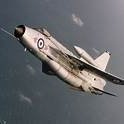
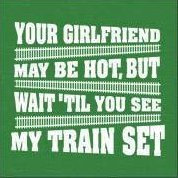


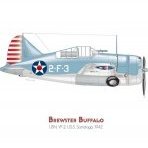


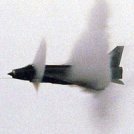

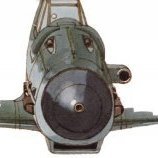
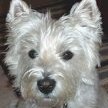
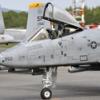
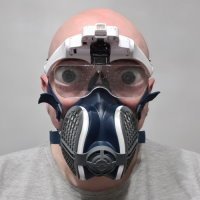
.thumb.jpg.0bac681e0da8e4ed7557610e98fda908.jpg)
